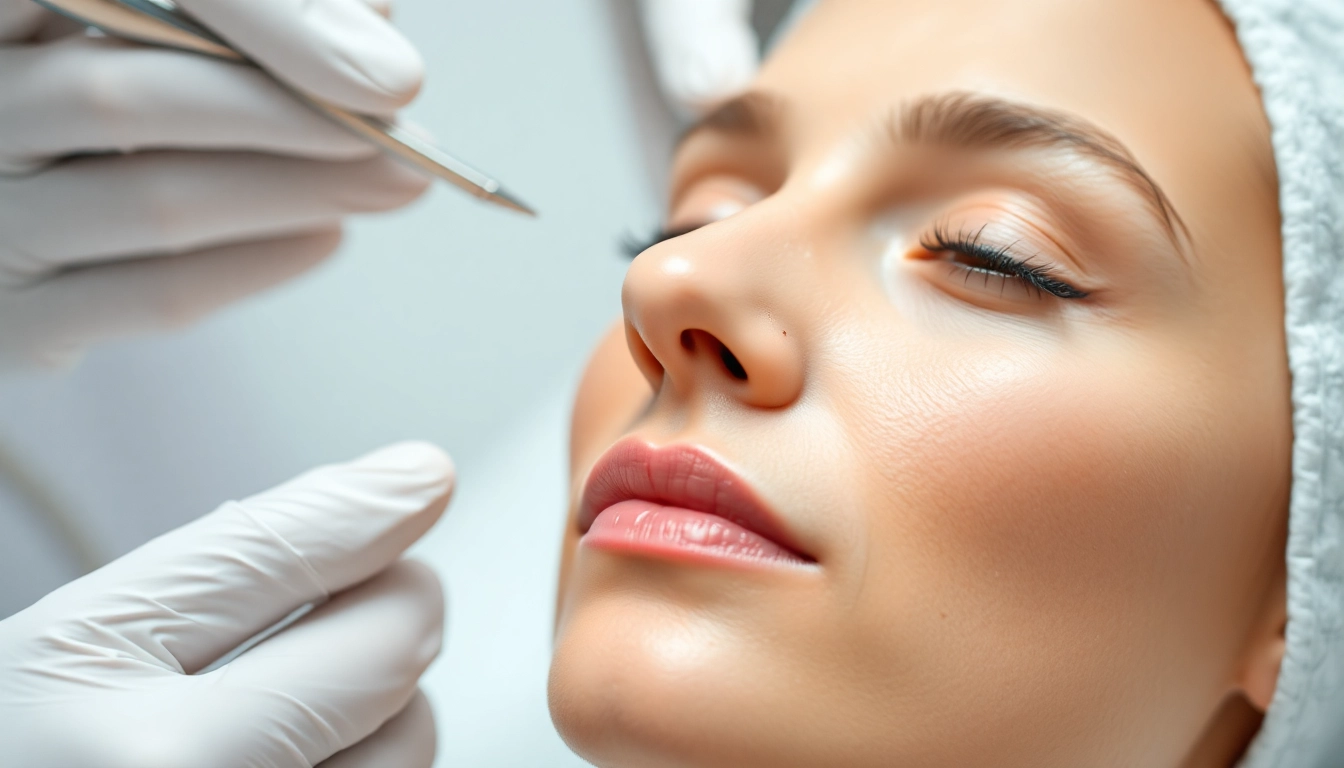Comprehensive Guide to Effective Non-Surgical Skin Tightening Treatments
Understanding Skin Tightening
Skin tightening has become a significant topic of conversation in the realms of beauty and aesthetics, attracting individuals looking for solutions to sagging skin. As we age, our skin naturally loses collagen and elastin, leading to an appearance that may not reflect how youthful we feel inside. Skin tightening procedures offer many people a way to regain that youthful vitality without undergoing invasive surgery. This article will explore various skin tightening techniques, their effectiveness, and what you can expect when exploring these options.
What Is Skin Tightening and Why Is It Important?
Skin tightening refers to the use of various techniques and treatments aimed at restoring skin elasticity and firmness. With age, exposure to UV light, pollution, and lifestyle choices can lead to collagen depletion—a protein that helps maintain skin structure. Importance lies in the fact that firm skin is often associated with youth and vitality, impacting not only self-esteem but also social and professional interactions. For many, restoring skin tightness can improve not only aesthetics but also provide a sense of well-being and confidence.
Types of Skin Tightening Techniques
Skin tightening techniques can be broadly categorized into non-invasive and invasive methods:
- Non-Invasive Techniques: These techniques typically include procedures such as radiofrequency and ultrasound therapies, which stimulate collagen production without the need for surgery.
- Minimally Invasive Techniques: Such treatments involve injections of fillers that can improve skin texture and volume but may not yield long-lasting results.
- Invasive Techniques: Surgical methods, like facelifts, involve altering the underlying structures of the skin to create a tighter appearance.
Common Areas for Skin Tightening Treatments
Effective skin tightening treatments can be applied to various areas of the body:
- Face: Treatments may target sagging cheeks, jawline, and neck areas.
- Abdomen: Common after weight loss or childbirth, abdominoplasty can remove loose skin.
- Arms and Thighs: The skin on the upper arms and thighs can also benefit from tightening procedures.
- Chest: Many people seek treatment for skin laxity on the neck and décolletage.
Non-Surgical Skin Tightening Options
Radiofrequency (RF) Treatment Explained
Radiofrequency (RF) skin tightening is one of the most popular non-surgical treatments. This method utilizes targeted energy to heat the deeper layers of skin, promoting collagen remodeling and elastin production. The heat stimulates the skin’s natural healing processes, leading to firmer and smoother skin.
Clinicians often combine RF with other treatments to enhance results, such as combining it with microneedling or other topical therapies. Patients can expect mild discomfort, but downtime is minimal, making it an attractive option for busy individuals.
Ultrasound Therapy for Skin Firming
Ultrasound therapy is another advanced non-surgical option for skin tightening. This method uses focused ultrasound energy to penetrate deep beneath the skin’s surface and stimulate the production of collagen. One of the most recognized brands in this category is Ultherapy, which is FDA-cleared and has garnered many positive reviews from patients. Procedures typically take between 30 minutes to an hour, depending on the area being treated. While initial results can often be seen immediately, optimal outcomes develop over three to six months as collagen production continues to improve skin elasticity.
Laser Treatments: Pros and Cons
Laser skin tightening is another non-surgical method that employs focused light energy to heat the skin’s underlying layers. CO2 and Erbium lasers are often used to rejuvenate the skin, minimizing wrinkles and tightening skin texture.
Pros of laser treatments include:
- Targeted precision, allowing for careful treatment of affected areas.
- Long-lasting effects with proper aftercare.
- Can also address pigmentation issues, enhancing overall skin tone.
However, laser treatments may come with some downsides:
- Higher cost compared to other non-invasive techniques.
- Potential for prolonged recovery time compared to RF and ultrasound.
Preparing for Skin Tightening Procedures
Consultation and Setting Realistic Expectations
Before proceeding with any skin tightening treatment, a comprehensive consultation with a qualified dermatologist or cosmetic surgeon is crucial. This process helps evaluate your skin type, understands the specific issues you wish to address, and sets realistic expectations.
A well-informed patient is more likely to be satisfied with the outcomes. Providers often recommend maintaining a skin-care regimen leading up to the treatment, focusing on hydration and nourishing the skin.
Skin Types and Their Response to Treatments
People’s skin varies greatly in terms of type, color, and texture, all of which can influence how skin tightening treatments perform. Consulting with an expert familiar with different skin types can help tailor treatment plans. For example:
- Oily Skin: May respond well to both RF and laser treatments, but may require adjusted aftercare.
- Dry Skin: Might benefit from less intense treatments and more nourishing pre- and post-care products.
- Sensitive Skin: Requires careful consideration and might need to avoid aggressive treatments altogether.
Post-treatment Care for Optimal Results
Post-treatment care is crucial for achieving optimal results and minimizing side effects like swelling or redness. It may include the following:
- Avoiding sun exposure to prevent pigmentation issues.
- Applying soothing serums to relieve any discomfort.
- Staying hydrated and maintaining a balanced diet to support skin health.
At-Home Skin Tightening Solutions
Topical Creams and Their Efficacy
In addition to professional treatments, many people turn to at-home products for skin tightening. Creams containing retinoids, hyaluronic acid, and peptides can deliver some firming benefits. Retinoids, in particular, have been found in various studies to improve skin elasticity by promoting cell turnover.
However, it’s essential to manage expectations; while creams can help, results may not be as significant or immediate as those from professional treatments.
Natural Remedies for Skin Firming
Natural remedies for skin tightening are readily accessible and often include:
- Egg White Mask: Rich in protein, egg whites can temporarily tighten and firm the skin.
- Olive Oil Massage: Massaging the skin with olive oil increases circulation, potentially enhancing skin elasticity.
- Aloe Vera Gel: Known for its hydrating properties, it can boost skin elasticity.
While these remedies can yield some improvement, they should be combined with a healthy lifestyle for the best results.
Exercise and Diet: Supporting Skin Elasticity
Regular exercise can enhance circulation, which feeds and nourishes skin cells—promoting overall skin health. Furthermore, a diet rich in antioxidants, vitamins, and healthy fats supports skin from the inside out. Foods to incorporate for enhanced skin elasticity include:
- Fruits and vegetables (rich in vitamins A and C)
- Omega-3 fatty acids found in fish
- Hydrating foods, such as cucumbers and leafy greens
Future of Skin Tightening Treatments
Innovative Technologies on the Horizon
As technology continues to advance, new methods for skin tightening are constantly being developed. Innovations in non-invasive devices that promise even better results with less downtime are on the horizon. Research is focusing on combining treatments, such as utilizing CRISPR gene-editing technology to enhance skin regeneration at a cellular level.
Comparing Surgical vs Non-Surgical Options
When considering skin tightening options, it’s essential to weigh the benefits of surgical vs non-surgical methods. Surgical options like facelifts yield dramatic results but come with higher risks, longer recovery periods, and significant costs. Non-surgical techniques, meanwhile, offer less invasive alternatives with shorter recovery times but often require multiple sessions for desired outcomes. Each individual’s needs, medical history, and personal goals should inform this decision.
Choosing the Right Provider for Your Needs
Finding a qualified provider is crucial in achieving the best results from skin tightening treatments. Look for professionals with certifications in dermatology or cosmetic surgery, and consider the following:
- Reviews from previous patients.
- Before-and-after photos showcasing their results.
- Consultation discussions to address all your questions and concerns.
Having clear communication with a qualified provider can lead to a successful outcome and a satisfying experience overall.



